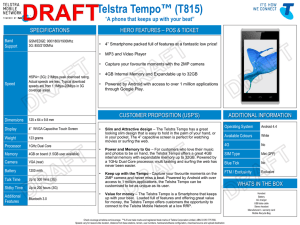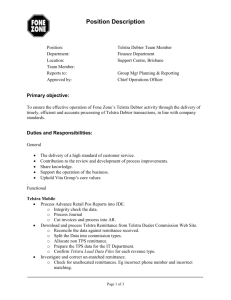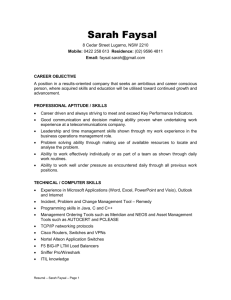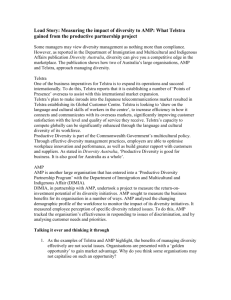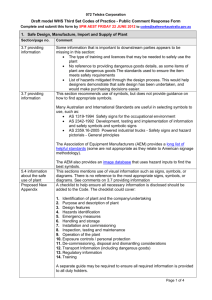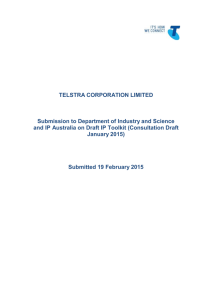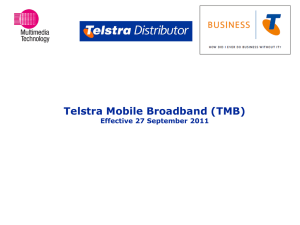Why Telstra needs less Russell Crowe and more John Nash
advertisement
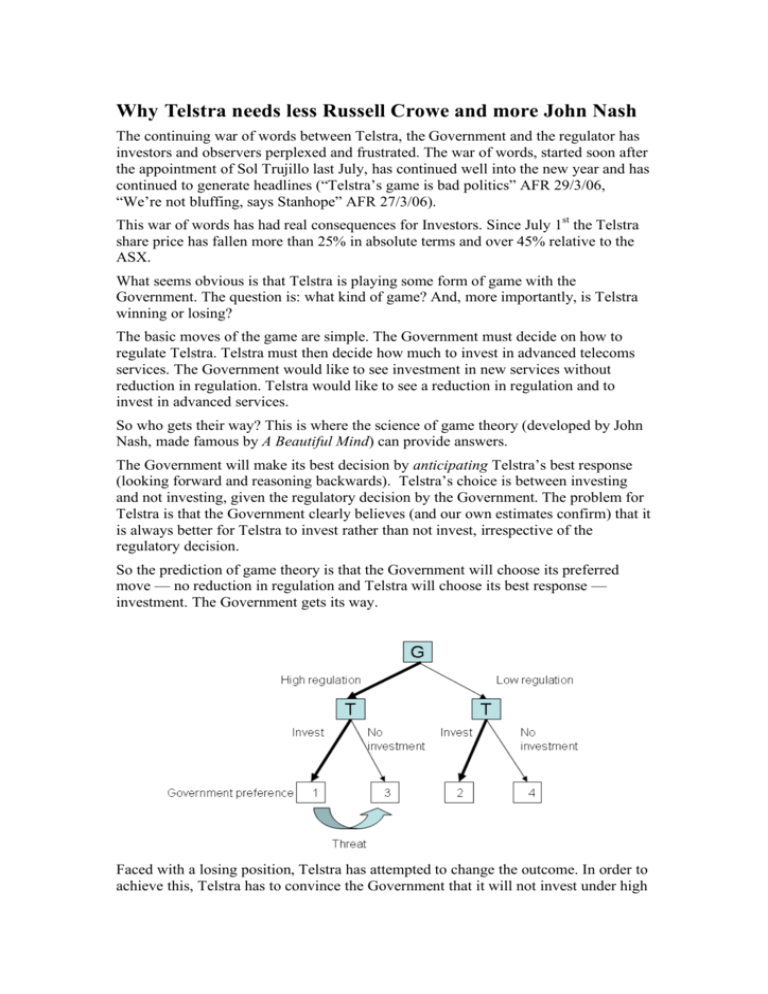
Why Telstra needs less Russell Crowe and more John Nash The continuing war of words between Telstra, the Government and the regulator has investors and observers perplexed and frustrated. The war of words, started soon after the appointment of Sol Trujillo last July, has continued well into the new year and has continued to generate headlines (“Telstra’s game is bad politics” AFR 29/3/06, “We’re not bluffing, says Stanhope” AFR 27/3/06). This war of words has had real consequences for Investors. Since July 1st the Telstra share price has fallen more than 25% in absolute terms and over 45% relative to the ASX. What seems obvious is that Telstra is playing some form of game with the Government. The question is: what kind of game? And, more importantly, is Telstra winning or losing? The basic moves of the game are simple. The Government must decide on how to regulate Telstra. Telstra must then decide how much to invest in advanced telecoms services. The Government would like to see investment in new services without reduction in regulation. Telstra would like to see a reduction in regulation and to invest in advanced services. So who gets their way? This is where the science of game theory (developed by John Nash, made famous by A Beautiful Mind) can provide answers. The Government will make its best decision by anticipating Telstra’s best response (looking forward and reasoning backwards). Telstra’s choice is between investing and not investing, given the regulatory decision by the Government. The problem for Telstra is that the Government clearly believes (and our own estimates confirm) that it is always better for Telstra to invest rather than not invest, irrespective of the regulatory decision. So the prediction of game theory is that the Government will choose its preferred move — no reduction in regulation and Telstra will choose its best response — investment. The Government gets its way. Faced with a losing position, Telstra has attempted to change the outcome. In order to achieve this, Telstra has to convince the Government that it will not invest under high regulation. This would reduce the Government payoff from high regulation and cause it to choose low regulation instead. Telstra has attempted to convince the Government by issuing a series of threats (a commitment to act against its interest to inflict damage to the Government). The threat was articulated very clearly in its November 15th briefings — no regulatory break, no new network. But talk is cheap. To work, threats must be credible. There must be some penalty for Telstra if it does not carry out the threat or else the Government will quite rightly ignore it. Thus Telstra started making its announcements through the ASX [FTTN announcement 21/12/2005], where there are more serious consequences to making misleading statements. Another way to change the outcome is to change the payoffs for the other party. By continuously directly linking regulatory outcomes to financial performance, Telstra has tried to make the Government’s regulatory decision a financial move rather than a policy move. Using our own estimates and Telstra’s guidance indicates that the Government’s decision on regulation could alter its proceeds from the T3 share sale by as much as A$8bn. Have the Telstra threats succeeded in changing the Government’s decision? At this point the signs are negative. Even worse, having chosen to go down the route of threats, Telstra’s bluff might well be called. This is the drawback of using threats; to follow through destroys shareholder value and to renege destroys management’s credibility. Is there a way out of what seems a lose-lose situation? In Game Theory you do not always need threats to get your way: sometimes all that is needed is to examine in more detail the game you are playing. The Telstra game plan has assumed that the Government is opposed to low regulation in principle. But we would argue that governments, in general, are ambivalent about regulation. What governments are afraid of is allowing an ex-public utility such as Telstra to act like a monopoly, stifling competition and charging monopoly prices. Monopoly pricing is only an option under reduced regulation. But it is not the only option. Telstra could still choose to set competitive prices and not to use its regulatory break to force competitors out of the market. This is a potential win-win situation for both the Government and Telstra. The key that unlocks this opportunity is a credible promise from Telstra to price competitively under low regulation. If the Government believes that Telstra would not abuse low regulation with monopoly prices, then this becomes its favoured outcome. This is not a new or unique idea. There is international precedence from the Scandinavian telecoms markets where low prices and advanced infrastructure have developed without the resort to harsh regulation. This type of outcome would, however, require a new level of trust between the Government and Telstra. As Telstra continues to raise the stakes with its threats, the game looks destined for lose-lose rather than win-win. Our analysis shows that the Government is currently in a winning position, with Telstra fighting hard but losing. Several positive alternatives are yet to be explored, but none lies down the current path of escalating threats. Maybe it is time for Telstra to stop fighting like Russell Crowe in Gladiator and start thinking more like John Nash?
